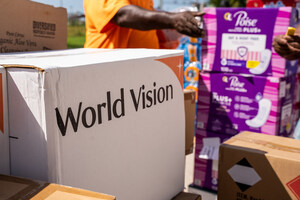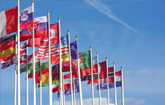World Vision Says Port-au-Prince's Urban Setting Creates New Challenges for Crisis Response
Aid agency says comparisons to 2004 Indian Ocean tsunami inaccurate, misleading
Global shift toward urbanization will set new paradigms for disaster response
World Vision announces increased funding commitment for Haiti relief to $50 million in the United States to scale up massive, long-term relief effort
PORT-AU-PRINCE, Haiti, Jan. 25 /PRNewswire-USNewswire/ -- The potential death toll and high-visibility of Haiti's deadly earthquake have sparked comparisons to the 2004 Indian Ocean tsunami. However, aid group World Vision sees more differences than similarities and cites the complexity of disaster response in urban settings as a critical complicating factor.
"I can see the temptation to compare these two disasters. But they are different in incredibly significant ways. The tsunami came with a loud bang followed by eerie silence in so many villages. In Haiti, one city lies in ruins, but aftershocks, injuries and further deaths continue day after day," said World Vision relief expert Jeffrey Wright from World Vision's base of operations in Port-au-Prince.
Some of the most significant differences World Vision cites include:
- Lack of sufficient space for large-scale displacement camps: "In part because of Haiti's topography, and in part because this disaster took place in an urban area, we don't have wide open spaces to set up large displacement areas," says Jean-Claude Mukadi, who is leading World Vision's Response Team there. "We're finding smaller camps tucked away on hillsides and even in the middle of neighborhoods full of rubble. In rural areas, we are able to use large spaces to set up camps for thousands – even tens of thousands – of people. And it becomes much easier to bring populations food and relief supplies quickly."
- Population density inherent to urban setting: For the most part, the tsunami hit broad coastal communities, most of which were sparsely populated. "While the number of people affected by the tsunami was massive, it was spread across multiple countries. It's possible that we see a death toll in Haiti that is similar to the tsunami's. The difference is that, here in Haiti, a comparable number of people will have died within a much smaller area, creating different secondary public health risks and a completely new displacement scenario," said Wright.
- Proliferation of survivors with devastating injuries: "With the tsunami, people either drowned or escaped; there wasn't as much need in the aftermath of the disaster to treat the injured," said Wright. "Following the Haiti earthquake, however, thousands of people had severe crush injuries. The need for medical supplies, particularly pain killers and antibiotics, continues to be overwhelming. We didn't see that kind of need during the tsunami."
"Fortunately, where there are similarities, World Vision has been able to apply learnings from the tsunami and other recent 'mega-disasters' like the 2009 earthquake in China and Cyclone Nargis, which struck Myanmar," said Wright. "World Vision is putting together a response plan that includes multiple sectors, including shelter, water and sanitation, the re-development of livelihood and microeconomic structures, and community empowerment and governance.
"Rebuilding is going to take years, not months. And because we've been in Haiti for more than 30 years, we know how to handle that kind of response in this specific context, maximizing local capacities and factoring in local solutions and innovations," said Mukadi.
"As climate change and global migration to cities continues to change the landscape of the developing world, we can expect to see more and more disasters centered on urban areas," said Wright.
World Vision recently announced that it was increasing its fundraising goal in the United States to $50 million to help scale up the massive long-term relief effort on the ground in Haiti.
World Vision is a Christian humanitarian organization dedicated to working with children, families and their communities worldwide to reach their full potential by tackling the causes of poverty and injustice. For more information, please visit www.worldvision.org/press
SOURCE World Vision U.S.
WANT YOUR COMPANY'S NEWS FEATURED ON PRNEWSWIRE.COM?
Newsrooms &
Influencers
Digital Media
Outlets
Journalists
Opted In






Share this article